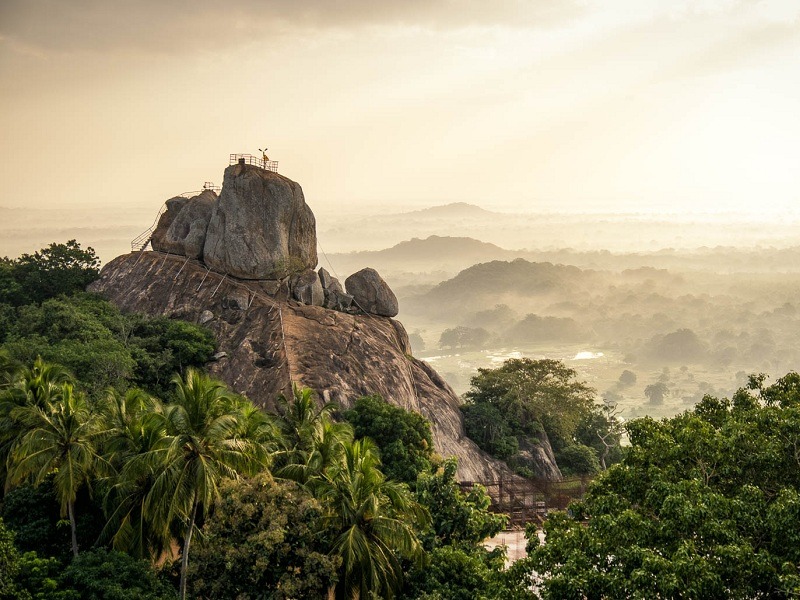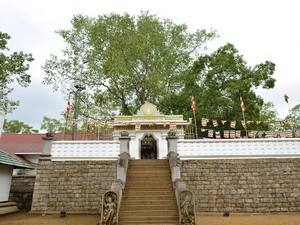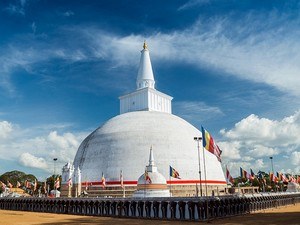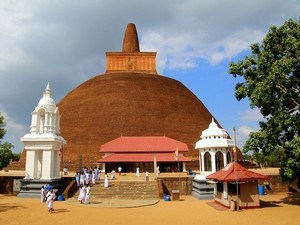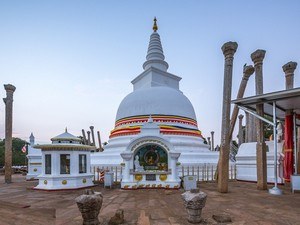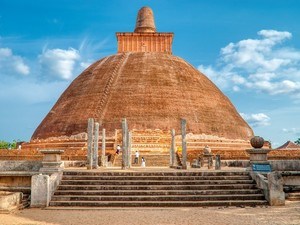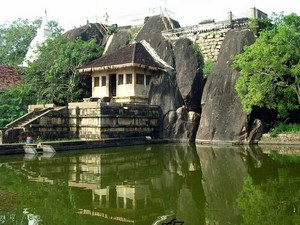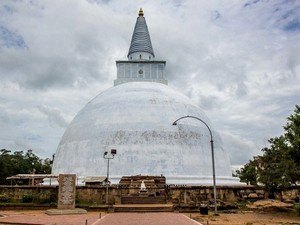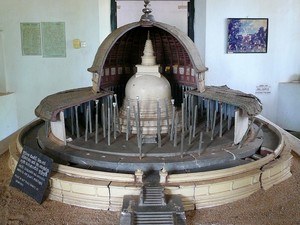Mihintale, Anuradhapura - Timings, Festivals, History, Darshan, Pooja Timings
 #10 of 15 Places to Visit in Anuradhapura
#10 of 15 Places to Visit in Anuradhapura
 Distance (From Anuradhapura): 14 Kms
Distance (From Anuradhapura): 14 Kms
 Trip Duration (Including Travel): 3 Hours
Trip Duration (Including Travel): 3 Hours
 Transportation Options: + Walk/Trek
Transportation Options: + Walk/Trek
 Travel Tips: None
Travel Tips: None
At a distance of 14 km from Anuradhapura, Mihintale is a Buddhist pilgrimage site and religious complex situated near Anuradhapura. It is one of the popular pilgrimage places in Anuradhapura and among the must-visit places as part of Sri Lanka's Cultural Triangle Tour.
Mihintale is revered as the birthplace of Buddhism in Sri Lanka. According to legend, it was at Mihintale that the Indian Buddhist monk Mahinda Thera met and converted King Devanampiya Tissa to Buddhism in 247 BC. Mahinda was the son of the great Mauryan emperor Asoka, sent by his father to bring the word of the Buddha's teachings to Sri Lanka. Mihintale, literally Mahinda's Mountain, eventually became the cradle of Buddhism and Sinhalese culture.
With the arrival of Buddhism in Sri Lanka, Mihintale Mountain began to serve as a residential area for the venerable monks headed by Arahath Mahinda Mahathera. But soon, with the royal patronage, the sanctuary housed a multitude of monastic buildings, stupas, uposathgharas, and bodhigharas to serve the monks. Sixty-eight cave dwellings provided the monks' shade and shelter. With the growth of the community of monks and the pious laymen, King Sena II (853-887 AC) had built a hospital at the base of the mountain. Thankfully the ruins of some of these buildings can still be seen today, making Mihintale the perfect day trip from Anuradhapura.
The great stairway is another feature of Mihintale that is situated on the eastern side of the slope in 4 sections. The stairway has 1840 steps made of granite, leading to the summit. They were built in the reign of Bhathika Abhaya, although a later paved road provides a short cut up to the first level. At the end of the first set of steps on the right side of the plain, is a small mountain peak. On this is situated the most famous Kantaka Cetiya, a 2nd century BC circular stupa having a base circumference of about 425 feet. The highlights of the building are the four richly decorated shrines, or vahalkadas, which face the cardinal points. The eastern facade is the best preserved, with horizontal rows of carvings including fine friezes of dwarfs and elephants, while on either side the wall is finished off with a tall carved pillar holding a weathered lion aloft.
The third flight of steps, narrow and steep, takes visitors on a spiritual ascent to the highest terrace, where the diminutive Ambasthala Dagoba and is said to have been built by King Makalantissa. The dagoba itself is said to enshrine the relics of the great Apostle Mahinda. It is here that King Devanampiyatissa first met Arahath Mahinda and the stupa is supposedly built over the exact spot where Mahinda met the king. To the side of the Ambasthala Dagoba is a flight of rock-carved steps leading to a large white Buddha statue.
When proceeding from Ambasthala Dagoba along the narrow road, on the slope is the cave known as Mihindu Guhawa or the cave of Arahath Mahinda, where he resided. The large stupa known as the Maha Seya is on the summit of the Mihintale hill, built by King Mahadathika Mahanaga (7-19 AD). The stupa was completely restored. On the summit, one can see Aradhana Gala, often referred to as 'meditation rock' or 'rock of invitation. Visitors ascend the ancient stairs, with the help of railings, to the top of Aradhana Gala. From here there are incredible views, especially around sunset. Other ruins to visit at Mihintale include the Lion Pond, Naga Pond, and he Kaludiya Pokuna.
The month of Posen (June) brings in many Buddhist pilgrims to Mihintale, and Posen Poya is the holiest day of the year (usually the day of a full moon in June). The cheapest way to get to Mihintale from Anuradhapura is to hire a tuk-tuk. There are many English-speaking guides waiting around Mihintale. Shoes are not allowed past a certain point. Bring a fresh pair of dark socks if you do not wish to walk barefoot on sand and pebbles. We suggest visiting in the early morning or late afternoon hours to avoid the heat.
Timings: 8 AM - 5 PM
Entry: LKR. 500 for Person (Includes entrance to the other religious sites within the area)



